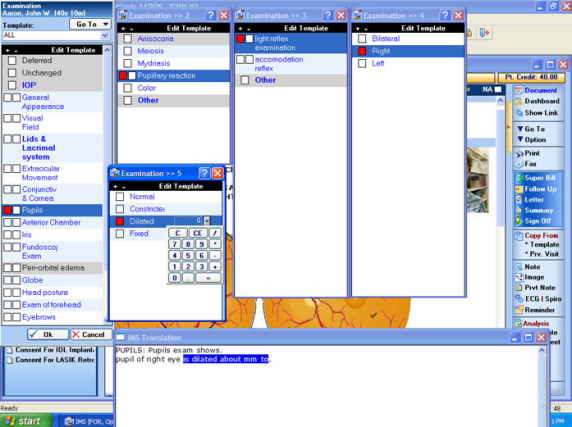Ophthalmology is a unique branch of medicine that differs greatly from other specialties. It requires the use of electronic medical record software with ultra-specific capabilities that generic, multi-specialty systems simply cannot provide. Ophthalmology EHR vendors are better positioned to meet the needs of physicians in this field, as they often employ specialty-specific teams with a better understanding of ophthalmology practice requirements and workflow.
At 1st Providers Choice, we work closely with specialty-specific professionals, such as ophthalmic assistants, to gain insight into the documentation needs of providers in this field. We also maintain regular involvement with ophthalmic and optometric organizations to keep abreast of constant changes and advancements.
Aside from providing key, specialty-specific EHR features and templates, our ophthalmology EHR software focuses on three important characteristics:
1. The ability to handle large image files efficiently.
Ophthalmologists frequently work with high-resolution images of patients’ eyes, and they need to be able to store and access these images without any system lag. Web-based EHR software easily makes this possible, as heavy files are not clogging up one single server. Ophthalmologists can quickly import eye images to their patients’ health records or open existing images for review. Physicians with physical servers may choose to purchase a separate server for their image files in order to prevent system lag.
2. The ability to easily record drawings of the eye.
Ophthalmologists often need to record aspects of their patients’ eye examinations with color drawings – and new technology facilitates the inclusion of these drawings in electronic medical record software. Most programs allow physicians to draw a picture, often with the use of a drawing pad, which can then be annotated by drawing arrows that point to corresponding text. Visual findings can be documented with minimal effort and inserted into the appropriate patient’s chart.
3. The ability to connect seamlessly to medical and ophthalmology devices.
Seamless integration with medical equipment, such as cameras and visual field units, can save ophthalmologists a great deal of time by ensuring that data gets to where it needs to go – in the corresponding patient’s health record – without creating extra work for the physician. We have set up interfaces with most major medical devices and have also worked with ophthalmologists to establish custom interfaces with lesser-known equipment.
Interested in learning more about our ophthalmology EHR features? Contact us today at 480-782-1116.

